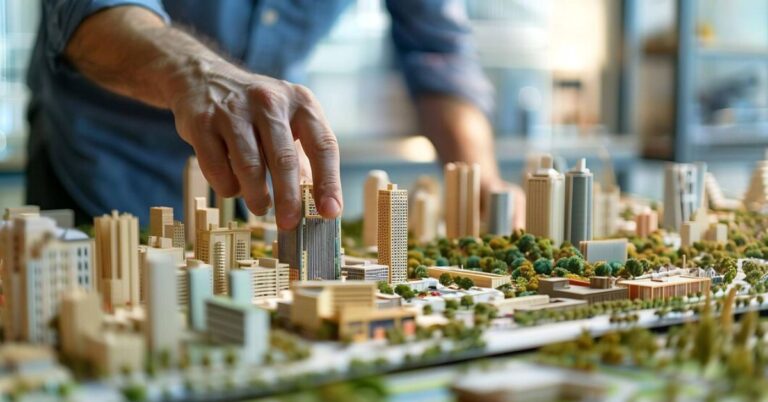Key Features of Police Cars Designed for Rapid Incident Response
Police cars are not just vehicles; they are finely tuned machines outfitted for a multitude of emergency scenarios. Designed to respond swiftly and efficiently, these cars possess unique features that distinguish them from standard automobiles. For law enforcement officers, having a dependable vehicle can make the difference between life and death. This blog post uncovers the fascinating world of police cars and highlights the key features that empower them for rapid incident response. From high-speed capabilities to tactical technology, discover how these vehicles are engineered to meet the demands of modern policing.
The Evolution of Police Cars
Over the years, police cars have undergone significant transformations. Initially, they were standard automobiles with minimal modifications, often lacking the power and durability necessary for high-speed pursuits. However, as crime rates increased and incidents grew more complex, the need for specialized vehicles became apparent. Advances in automotive technology have allowed law enforcement agencies to customize their fleets extensively.
Today’s police cars boast engines that deliver incredible horsepower, enabling them to reach high speeds within moments. These vehicles are built with reinforced frames, ensuring they withstand the rigors of intense pursuits. Additionally, improvements in safety features protect both officers and civilians during high-stakes operations. The evolution of police cars reflects the changing landscape of public safety and the pursuit of efficiency in emergency response.
Powerful Engines for Swift Pursuits
At the heart of any police car is its engine, a critical component for rapid response. Equipped with high-performance engines, these vehicles can accelerate quickly, enabling officers to catch up with suspects in no time. The powerful engines are designed to handle extended periods of high-speed driving, making them ideal for pursuits that demand sustained speed and agility.
Law enforcement agencies often collaborate with automobile manufacturers to develop engines specifically tailored for police work. These customized engines provide a balance of performance and reliability, ensuring officers can respond promptly to emergencies. With the ability to maintain high speeds while preserving fuel efficiency, police cars can cover extensive distances without frequent refueling.
Advanced Suspension and Handling Systems
Handling and maneuverability are crucial for police vehicles, especially during high-speed chases. Police cars are equipped with advanced suspension systems that enhance stability and control, allowing officers to maintain precise handling even in challenging conditions. These systems minimize body roll and improve traction, ensuring the vehicle remains steady during sharp turns and sudden maneuvers.
Officers rely on vehicles that can adapt to various terrains, from urban streets to rural landscapes. The suspension and handling systems of police cars are designed to deliver optimal performance across diverse environments. This adaptability allows law enforcement to respond effectively regardless of the geographic location or road conditions they encounter.
Reinforced Frames and Safety Features
The safety of officers and civilians is paramount in emergency situations. Police cars are equipped with reinforced frames that provide enhanced protection during collisions and high-impact incidents. These frames are built to absorb and distribute impact forces, minimizing the risk of injury to occupants.
In addition to reinforced frames, police vehicles feature a range of safety enhancements. Airbags, anti-lock braking systems, and electronic stability control contribute to the overall safety of the vehicle. These features work in tandem to ensure officers can operate their vehicles with confidence, even in high-risk scenarios. The integration of cutting-edge safety technology underscores the commitment to protecting those who serve and the communities they safeguard.
Emergency Vehicle Lights and Sirens
Visibility is critical for police vehicles, especially during emergency responses. Emergency vehicle lights are an essential feature, providing a visual signal to other motorists and pedestrians. Police cars are equipped with high-intensity LED lights that are visible from a distance, alerting people to the presence of law enforcement.
Sirens complement the visual signals by providing an auditory cue. These sirens produce distinct sounds that can be heard over significant distances, ensuring other drivers yield the right of way. The combination of lights and sirens enhances the effectiveness of police vehicles in navigating through traffic and reaching incidents swiftly.
High-Tech Communication Systems
Effective communication is vital for coordinating responses and sharing critical information. Police cars are equipped with high-tech communication systems that enable seamless interaction with dispatch centers and other units. These systems include two-way radios, mobile data terminals, and GPS navigation.
Two-way radios facilitate real-time communication between officers and dispatchers, allowing for rapid updates and adjustments to strategies. Mobile data terminals provide access to databases and resources, enabling officers to retrieve information about suspects, vehicles, and addresses. GPS navigation assists in navigation, ensuring officers reach their destinations efficiently.
In-Car Technology and Equipment
Police cars are essentially mobile command centers, outfitted with a range of technology and equipment. In-car cameras capture video footage of interactions and incidents, providing valuable evidence for investigations. License plate readers scan and identify vehicles, aiding in the detection of stolen cars or wanted individuals.
The integration of computers and digital systems allows officers to access information and complete reports directly from their vehicles. This technology streamlines administrative tasks and enables officers to spend more time on patrol. The combination of technology and equipment in police cars enhances productivity and contributes to effective law enforcement.
Tactical Storage Solutions
Police officers require easy access to equipment and tools during emergencies. Police cars are designed with tactical storage solutions that maximize space and organization. Trunk compartments and interior storage areas are customized to accommodate firearms, medical kits, and other essential gear.
Efficient storage solutions ensure that officers can quickly retrieve the equipment they need without hindrance. This accessibility is crucial in high-pressure situations where time is of the essence. The thoughtful design of storage solutions underscores the importance of preparedness in law enforcement.
Specialized Tires for All Conditions
Tires are a critical component of any vehicle’s performance, and police cars are no exception. Police vehicles are equipped with specialized tires that provide optimal traction and durability in various conditions. These tires are designed to withstand high-speed driving, cornering, and braking.
All-weather tires offer versatility, ensuring police cars can operate effectively in diverse climates. Whether it’s rain, snow, or dry pavement, these tires deliver consistent performance. The emphasis on tire quality reflects the commitment to maintaining control and safety in all scenarios.
Eco-Friendly Innovations in Police Vehicles
In recent years, there has been a growing emphasis on sustainability in law enforcement. Many police departments are adopting eco-friendly innovations in their vehicle fleets. Hybrid and electric police cars are being introduced as part of efforts to reduce emissions and promote environmental responsibility.
These eco-friendly vehicles maintain the performance and capabilities required for law enforcement while minimizing environmental impact. The transition to sustainable technology reflects the broader societal shift towards greener practices. Police departments are increasingly recognizing the importance of balancing public safety with environmental stewardship.
Continuous Training for Officers
To fully leverage the capabilities of police cars, officers undergo continuous training. Driving techniques, vehicle maintenance, and emergency response protocols are covered in training programs. Officers learn how to handle high-speed pursuits, execute tactical maneuvers, and optimize vehicle performance.
Training ensures that officers are proficient in using their vehicles effectively and safely. By staying updated on the latest advancements and techniques, officers can respond confidently to incidents. The commitment to training reflects the dedication to professionalism and excellence in law enforcement.
Conclusion
Police cars are integral to the mission of law enforcement agencies. Their specialized features enable officers to respond rapidly and effectively to incidents, ensuring public safety and order. From powerful engines to advanced technology, these vehicles are designed to meet the demands of modern policing.
Understanding the key features of police cars offers valuable insights into the challenges and innovations in law enforcement. These vehicles embody the principles of efficiency, safety, and adaptability. For those interested in exploring further, engaging with law enforcement professionals and experts can provide deeper insights into the role of police cars in public safety.







